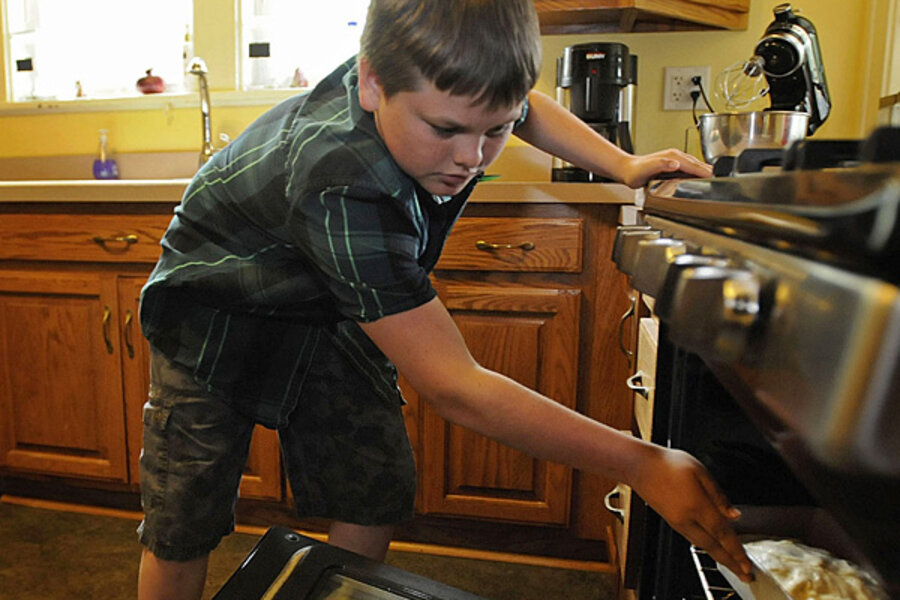No time to cook at home? Hogwash! How to save money with home-made meals
Loading...
One of the easiest ways to trim your budget is by taking a serious look at your food spending. Let’s start with a few quick facts about how Americans eat:
+ At least 1 in 4 people eat some type of fast food every day.
+ Americans consume 31 percent more packaged food than fresh food.
+ Americans spend 10 percent of their disposable income on fast food every year.
The truth is that fast foods and convenience foods are expensive compared to making your own meals. We’re not even talking about eating at a nice restaurant, which is incredibly expensive compared to making your own meals.
The problem is that, for many people, cooking seems like a serious chore. It seems much easier to just order some food, eat something incredibly basic, or pop a ready-made meal in the microwave or the oven. It’s not so much a matter of laziness, but of time. A lot of people have overstuffed schedules and convenience foods, at least at first glance, reduces the time devoted to food preparation.
In other words, many people view it as easier to pay more for convenient foods because that extra money theoretically nets you some extra time.
Here’s the reality: fast food and convenience food often take more time than you think, and meal preparation often takes far less time than you think if you approach it sensibly. If you eat fast food, for example, you’re often driving out of your way at least a little, waiting in a drive-through lane for often surprising amounts of time, checking your meal in the hopes that they got it right (and going back if it isn’t), and then navigating back into traffic when you’re done. For me, this often eats up ten or fifteen minutes.
On the other hand, meal preparation at home, if done in a sensible way, can be done in fifteen minutes.
If food preparation at home is something that’s not part of your normal routine, here are a few ways to dip your toes into the water without spending hours.
Hyper-Simple Recipes
One way to approach this is to stick with hyper-simple foods. For example, Real Simple has a great collection of three ingredient recipes. These things just use three ingredients that synergize well together, making food preparation an absolute snap. I can get meals like this on the table in far less time than it takes to nuke a convenience meal or pick up fast food.
Slow Cooker Recipes
A slow cooker is a godsend to a busy family. You can simply dump a list of items into the crock pot at the start of the day, turn it on low, go to work, come home, add another item or two, turn it on high, and then have a piping hot meal on the table half an hour later.
You can make pretty much any kind of food in the slow cooker, too, from ribs or chicken to pasta-based meals or soups. Here are some of my favorite slow cooker recipes for starters.
Batch Meals
Have a few hours free on a weekend? Make a bunch of meals yourself and freeze them. I’ve made a dozen individually packaged spaghetti meals before, as well as several casseroles all at once. Just pop them in the freezer in a closed container so you can pull them out later as needed.
It might take you an hour to make a pan of lasagna, but it only takes an hour and a half to assemble six pans because most of the work involved is in the setup and takedown. This reduces the time per pan down to fifteen minutes, which means that a fresh pan of homemade lasagna ends up being pretty convenient. Make several of them, eat one that day, and freeze the rest.
Leftovers and Spices
To me, this is the real key to saving money at home. If you use spices – black pepper, tarragon, oregano, sage, thyme, basil – effectively, you can make any bland dish pretty tasty. For example, I don’t like plain cottage cheese, but if I mix in a bunch of black pepper and just a bit of chives, I love the stuff.
This is particularly useful when it comes to leftovers. I view leftovers as basically being free meals (which means they’re big money savers), but I’ll be the first to admit that they can be pretty bland. The secret is to add more spices. I’ll mix in a dash of oregano into leftover pasta or put some black pepper on top of a leftover salad and it turns something bland into something tasty very easily.
Following these tactics makes it very easy to switch to making meals at home instead of eating fast food, eating at restaurants, or microwaving convenience foods. Every single meal you switch will save you some money, and when you start getting into the routine of it, the savings can really add up.








